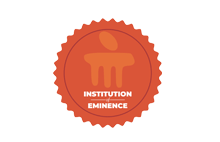Deciphering the dynamics and trophic mode distribution of the leaf spot-associated fungal community of eggplant (Solanum melongena L.)
Document Type
Article
Publication Title
Phytopathology Research
Abstract
The invasion of phytopathogens impacts the composition and associations of the internal microbial inhabitants. Leaf spot is one of the most devastating diseases in eggplant var. Mattu Gulla which is unique in terms of geographic indication (GI) status. Leaf spot samples (asymptomatic and symptomatic) were collected to characterize the fungal community associated with them using culture-based and next-generation ITS rRNA-based metabarcoding approaches. Both methods showed that Ascomycota and Basidiomycota were the predominant phyla in both groups. In the asymptomatic group, Didymosphaeriaceae, Pleosporaceae, Trichomeriaceae, and Capnodiaceae were the most differentially abundant families. In contrast, Phaeosphaeriaceae, Pleosporaceae, Didymellaceae, Rhynchogastremataceae, and Bulleribasidiaceae were the most differentially abundant families in the symptomatic group. At the genus level, Cladosporium was the most differentially abundant genus in the asymptomatic group. In the symptomatic group Alternaria, Remotididymella, Vishniacozyma, Bulleribasidium, Occultifur, Epicoccum, and Loratospora were the abundant genera. The pathotroph-saprotrophic mode was the most common mode identified in both groups, with an increased abundance in the symptomatic group. Seven fungal families and two genera were identified as common according to the culture-based method and NGS analysis based on ITS rRNA metabarcoding. Our study indicated that the composition of the core microbial community varies with plant health status, and a combination of culturable and next-generation ITS rRNA-based metabarcoding approaches could be a reliable option for obtaining a detailed understanding of plant-associated fungal communities.
DOI
10.1186/s42483-024-00277-2
Publication Date
12-1-2024
Recommended Citation
Kaniyassery, Arya; Sathish, Sudhanva Bhimanakatte; Thorat, Sachin Ashok; and Murali, Thokur Sreepathy, "Deciphering the dynamics and trophic mode distribution of the leaf spot-associated fungal community of eggplant (Solanum melongena L.)" (2024). Open Access archive. 9675.
https://impressions.manipal.edu/open-access-archive/9675


